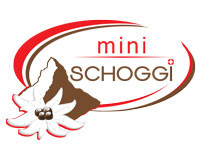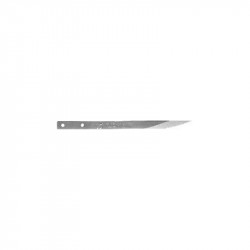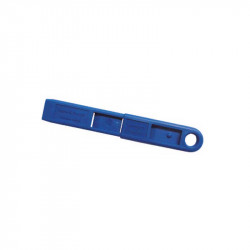A Mail deliveries
Order by 4 pm = delivery the next working day.
Free delivery
From CHF 100 purchase
-
MenuBack
-
Online Store
-
-
-
- Couverture
- Temperature control units
- Aids for chocolate
- Chocolate molds
- Praline fillings
- Chocolate ingredients
- Praline hollow body
- Chocolate colors
- Chocolate tattoos
- Chocolate packaging
- Bean to Bar
- Material for cutting chocolates
- Batons with Kirsch
- Airbrush for chocolate
- High Heels Accessories
- Textured films for chocolate
- Chocolate fountain & fondue
-
-
-
-
-
- Cakes Fillings & Ingredients
- Fondant & Marzipan
- Cakes tools
- Cake rings
- Silicone molds
- Decorative mats
- Baking pans for cakes
- Cake stand
- Cakes packaging
- Airbrush for cakes
- Sugar flowers accessories
- Cake Topper & Wedding Figurines
- Cakes dummies
-
-
-
-
-
-
-
-
-
-
-
-
-
-
-
-
-
-
-
-
-
-
-
- Baking chocolate
- Glucose & Sorbitol
- Cocoa beans
- Cocoa nibs
- Monin syrup
- Champagne & Alcohols
- Freeze dried fruits
- Cake & cake glaze
- Flours & baking ingredients
- Chocolate coating & chocolate
- Milk powder
- Granules
- Nuts & Nougat
- Fruit puree
- Creams & Fillings
- Egg yolk & egg white
- Fruit powder
- Special ingredients
- Fondant & Flower Paste
-
-
-
-
-
-
-
- Punching, cutting & embossing
- Mixing bowls & whisks
- Chocolate material
- Thermometer & Burner
- Gloves & Protective Material
- Smoothing & Modeling
- Roll out bar
- Dough scraper & horn
- (Flour) sieves
- Brushes & Tweezers
- Cake turntable
- Spatula & Spatula
- Silicone embossing molds
- Insert strips & cake slices
- Measuring cup
-
-
-
-
-
-
-
-
-
-
-
-
-
-
-
Schablonen & Stencils
-
-
-
-
-
-
-
-
-
-
-
Courses
-
-
- Current courses
- Praline courses
- Chocolate courses
- Chocolate kiss course
- Macaron courses
- Cake courses
- Baking courses
- Patisserie courses
- Ice cream course
- Guetzli, Cookie & Confectionery Courses
- Bread courses
- Pasta courses
- Apéro course
- Cooking courses
- Cupcakes courses
- Éclair course
- Courses in Zurich - Adliswil
- Children's courses
-
-
- Team Events
- Hen Night
- Retail Store
-
About Us
-
-
-
DirectionsDownload relevant PDF now.
-
-
-
Recipes blog
-
-
Recipes Blog
-
-
-
Shipping and Payment
-
List of products by brand MURE ET PEYROT
Sharp knives with which you can make precise cuts while being safe from injury - that is the aim of Mure & Peyrot. Here you will find excellent baker's knives with interchangeable blades for cutting into dough pieces.
There are 6 products.
Active filters
Mure & Peyrot produces a wide range of knives and tools for industry. These include, for example, tools for making windscreens, cutters for opening packaging and parcels, and baker's knives, which you will find in our shop. A baker's knife is a great tool for shaping and baking your own bread. With a few sharp cuts, the fermented dough is cut in the desired pattern and immediately baked. The dough separates during the cuts and a fine crust is formed. Not only does the cutting create beautiful patterns, it also controls the rising during baking so that your beautifully shaped dough piece does not simply crack and tear. The blades are standard razor blades, this allows you to replace slightly dulled edges without the need for a new knife.
Depending on the shape of the blade, it is more suitable for some cuts. If the knife is straight, nice straight cuts can be made. This is needed, for example, for the typical rhombus pattern of a farmer's bread or for elegant pattern breads. In this case, cuts of different depths are arranged in such a way that, for example, a flower or a spiral is created. Such patterns look particularly great if the dough piece has been moistened and rolled in flour, sesame or poppy seeds beforehand.
Curved blades are usually used for baguettes and other breads with shallow cuts. This involves cutting shallowly to create pockets or ears that fold back onto the dough. During baking, they are then pulled apart to form the typical baguette pattern.
Besides baker's knives, Mure & Peyrot also offers many other knives, cutters and tools. However, it began as a family business in the traditional knife industry. In Puy-de-Dôme near Thiers, the Mure family entered the knife business. Thiers is very well known for its knife industry and blades and handles were made there early on. As a result, various jobs were created and a wide variety of trades were involved in the manufacturing process. First a blank was forged, this then had to be ground and polished. Handles were often made from horn, this encouraged hunting and the horns also had to be worked on. Finally, the knives were assembled, polished and sold.
In 1904, Claude Mure bought a knifemaking business for his sons, but one of them died in the First World War and so the second son worked alone at the beginning.
At that time, a wide variety of cutting tools were already being manufactured. The range included strong loppers and hooks for grafting trees. This is the insertion of a branch of a particularly tasty and sweet fruit tree species, for example, into the trunk of a more resistant and frost-hardy variety of the same species. Correct pruning promotes the rapid and healthy fusion of the two components and ensures a higher yield of particularly good fruit varieties. After the First World War, there were many returning soldiers who sustained injuries. Special knives were designed for soldiers who had to amputate an arm. By rocking the blade back and forth, people with one arm could cut their own food.
Ernest Peyrot became part of the family in 1938 and 16 years later became the business manager of Mure & Peyrot. Some time later, Jean-Claude Peyrot and his wife took over the company again. Over the years, new tools were added and others disappeared from the range. After the First World War, the material linoleum appeared as a floor covering. Mure & Peyrot produced the appropriate tools for cutting and laying these floors. Knives were also designed for other trades, but the focus was always on safety when handling the sharp blades. Today, Mure & Peyrot cutters, knives and tools can be found everywhere, in the security industry, at airports, in parcel stations and also in our home.
The company's baker's knives are easy and safe to handle and are very popular with bakeries because of their design. The blade can be easily rotated for even wear. A nice sharp cut is very important for an optimal result, if this is no longer possible with the old blade, a new one can easily be inserted. Razor blades are readily available, the blade lock opens easily and the baker's knife is ready for the next dough pieces.
For best results, the dough must be well fermented, the knife sharp and the oven well preheated. With most doughs, if you press in lightly and the resulting dent disappears quickly, the dough is ready. The dough is always cut just before baking, so that this part is not yet dented, the cut separates nicely and forms the crispy crust. After cutting, rinse the blade with a little water if necessary. Avoid using abrasive sponges or aggressive detergents to avoid dulling the blade. Finally, put on the plastic protector and put the knife back in the drawer until the next use.






